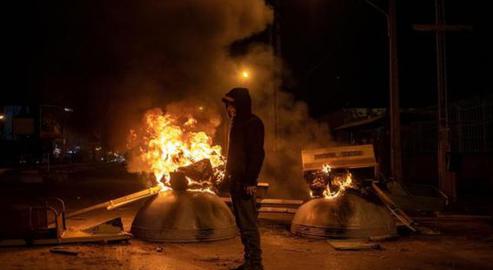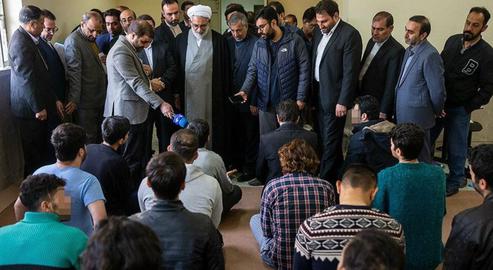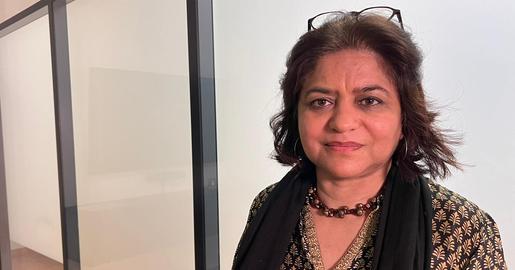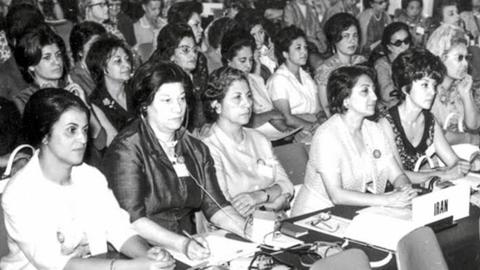The following article is a narration from a prison inmate in Iran, published by IranWire as part of a collection of reports from convicts on their experiences behind bars. This report focuses on the distribution of narcotics in Greater Tehran Penitentiary, where detained protestors from the demonstrations of January 2017, August 2018 and November 2019 are being held.
***
Many protesters arrested on the streets of Tehran during the last three rounds of demonstrations have ultimately ended up in Greater Tehran Penitentiary (known as “Fashafuyeh”). For many of them, the interrogation started from the moment of their arrest. Some were first taken to safe houses, Revolutionary Guards outposts such as the Sarollah base, secure wards of Evin Prison or Ministry of Intelligence premises. But most were eventually transferred here, in the Hassanabad area south of Tehran.
In some cases, when security agencies or prisons deem it necessary, the detained protesters are subjected to further violence as soon as they arrive, in order to – as the saying goes – "get the job done". Two rows of soldiers line up, facing one another, to create a tunnel. Detainees, whose bodies are often already bruised and broken from beatings during interrogation, must pass through this while being battered again. They enter this "soldiers' tunnel" straight after getting off the bus, and the soldiers greet them with batons and boots.
If the prisoner is a quick thinker, he’ll put his hands on his head and scream as he passes through the tunnel. Protesters are then fingerprinted and photographed as the suspects of security crimes. This stage in prison is called "card and photo". The prisoners are then taken to the wards and handed blankets.
The early days of imprisonment are usually spent alone. The prisoner is deprived of any contact with family and is subjected to physical and psychological torture in the form of insults, brutalization and humiliation by the guards and prison staff.
But I want to tell an unspoken story, about another form of punishment that I know to be deliberate, and that the government is knowingly afflicting on imprisoned protesters.
In all three of these waves of detention, in January 2017, August 2018 and November 2019, one lawyer and his team were selected to represent the whole of the ward. All the work of managing the fresh batch of prisoners is the responsibility of the “ward lawyer” and his retinue. In general, these people are appointed by prison guards, and the lawyer earns a good income from this position.
He earns all the more, though, from facilitating the distribution of drugs on the ward. These very same lawyers are directly involved in spreading cheap, mass-produced narcotics among the young demonstrators being held behind bars.
We call the ward lawyer Javad. As soon as Javad has taken control of the ward, he establishes a “law enforcement force” of selected prisoners and lays down a new set of rules for how the place is going to be run.
Javad gives his team B2 pills, heroin, methamphetamines, and other narcotics to pile high and sell cheap on the ward. Sometimes he even “gives love" to the inmates: that is to say, he gives them drugs free of charge.
Javad and his crack team of “enforcers”, made up of the oldest prisoners from among the newly-arrived detainees, tell the inmates they won’t last long in prison without a constant supply. "Everyone in prison uses drugs so the days pass quicker. They’ll quit when they leave."
They talk endlessly about the goodness and necessity of drug use, and the hardship and ugliness of imprisonment, to convince the inmates to begin using. This is how it’s been in prison for the past three years, and for each new wave of detentions. In the first few months, drug recommendation, distribution and first-time use becomes rife.
Consider the mental state of the protesters on entering the prison: the violence they were subjected to in detention, and the pressure on their families. After long interrogations, court hearings, months of waiting for a verdict, and the horror at the sentence finally issued, the hair of some young people in prison has been known to turn white. Suddenly these dynamic youth are faced with wide-ranging restrictions: no books or libraries, no newspaper or magazines, no sports, no television, in short, nothing that the prison is supposed to provide according to the regulations. With nothing with which to spend their time, some will invariably turn to drugs.
After a while, a number of the November 2019 detainees protested against Javad’s presence on the ward. Following a clash in the prison, they managed to have him and his team dismissed on the ward. But by then, many of their friends had already become heavy drug users. Prison officials transferred the scattered group that had denounced Javad to a different ward, meant for the perpetrators of serious crimes.
Here and in these wards, there is little financial or economic benefit in the drug cycle. This cycle pursues another goal. It is of the essence for the government, the prison, and the authorities to turn a young protester with a raised fist into an addict begging for more.
Read other articles in this series:
Financial Criminals and Prison Guards Set Up Factories Behind Bars
Tales of Rape and Sex Slaves in an Iranian Prison


























comments